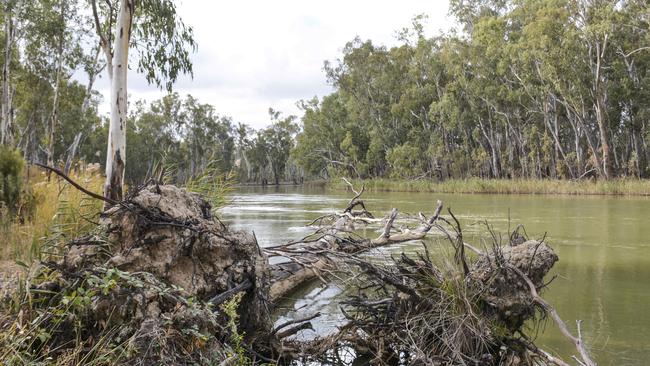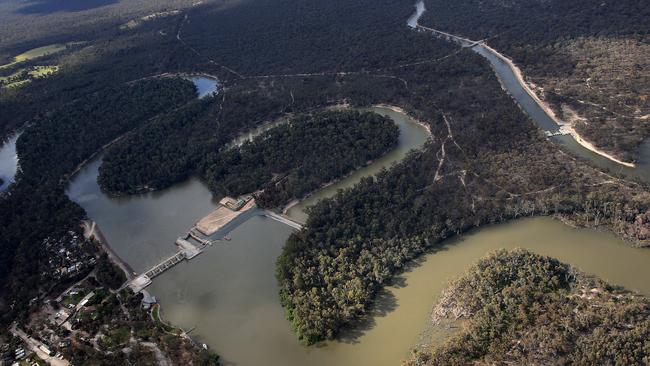2022 Floods: Shove massive sand slug into the Barmah Choke
The 2022 floods drove a massive slug of sand even further into the Barmah Choke, slashing its capacity to meet irrigation demand.

The 2022 floods have dumped up to three years’ worth of sand into Barmah-Millewa choke, further reducing its capacity and river managers’ ability to deliver water to downstream users.
The Murray Darling Basin Authority undertook an investigation in 2019 that found a 20 million cubic metre slug of sand, believed to be due to 150 years of goldmining and land clearing, was slowly being pushed down the river from Yarrawonga Weir into the choke.
The slug, which is up to 4m thick in places, has been the main contributor to cutting the choke’s capacity from 11,300 megalitres a day in the 1990s to 9200 megalitres a day in 2021.
The Weekly Times understands industry groups were recently told by the MDBA that situation had worsened with last spring’s floods pushing two to three years’ of sand into the choke.
Murray Darling Basin Authority river management executive director Andrew Reynolds refused to confirm the numbers, but did say “indications are that the floods have accelerated the sand build-up in the Barmah-Millewa reach”.

“Now that the river bed is settling after the flood we are in the process of getting an updated set of flow measurements in the river and resurveying the river bed to assess the changes,” Mr Reynolds said.
An Alluvium consulting report, based on the choke’s capacity prior to the floods, found that over the past decade, an average of about 975,000ML a year of regulated flows had been delivered through the Barmah-Millewa choke during the peak summer irrigation period – from December 15 to March 30. Of this volume, about 83,000ML/year was pushed through the choke at flow rates above 8300 ML/day.
Alluvium estimates the potential flow rate will decline to 7700ML/day within the decade if no action is taken.
“This continual decline in flow capacity could reasonably be expected to increase the risk of delivery shortfall events, having the potential to indicatively affect around $230 million and 11,000ha of irrigated agriculture in the lower Murray,” the report stated.
Yet to date neither federal nor basin state governments have made any major funding commitments to either dredging the sand from the choke or diverting summer flows around it.
Opposition water spokeswoman Perin Davey said there was no extra money in the federal budget to proceed to the next phase, just $3.2 million to refine a preferred option for mitigating the choke constriction.




